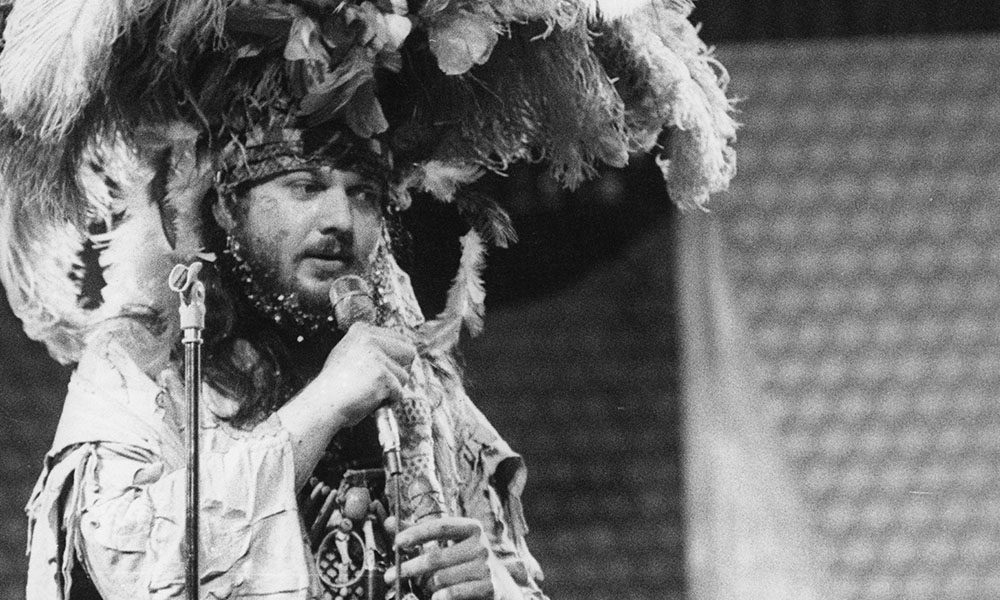Dr. John: The Legacy Of New Orleans’ Voodoo Night Tripper
Dr. John’s remarkable musical legacy spans funk, blues, jazz, boogie-woogie, rock, psychedelic rock, and pop. His influence is monumental.

The self-proclaimed Night Tripper, New Orleans musician Dr. John left an insurmountable legacy that made him a huge influence among musicians.
Early years: from New Orleans to The Wrecking Crew
Born Malcolm John Rebennack Jr, in New Orleans, on November 20, 1941, John started out playing guitar and bass as a teenager. His life took a dramatic turn in 1960, when his left index finger was hit by a bullet as he protected bandmate Ronnie Barron during a brawl. That injury forced him to switch to playing the piano – and he went on to become one of the world’s most celebrated musicians.
In the 60s, he relocated to Los Angeles and worked as part of The Wrecking Crew, a group of Los Angeles session musicians, playing on recordings by Cher, Aretha Franklin, Canned Heat, and Frank Zappa, blending funk with R&B and boogie woogie.
Birth of Dr. John Creaux The Night Tripper
In 1968, following the release of his debut album, Gris-Gris, he introduced the world to his outlandish stage alter ego, Dr. John Creaux The Night Tripper, capturing the weirdness and vibrancy of the Latin Quarter in his shows. He weaved voodoo incantations and bayou patois into a mix of piano, percussion, horns, and vocal chants that fused New Orleans music with elements of rock and psychedelia. He was a great showman and would wear elaborate headdresses, feathers, snakeskin, beads, face paint, and glitter – often starting a show with a skull on top of his piano.
Performance and theatricality
Showmanship and Dr. John went together naturally, something you can see in his film appearances on Martin Scorsese’s The Last Waltz, Sgt Pepper’s Lonely Hearts Club Band, and The Blues Brothers. In the past decade, he had a role in the HBO television series, Treme, which was set in New Orleans.
Creator David Simon, the man behind The Wire, said that Dr. John’s way of talking was so unique (Simon called it “Macspeak”) that it proved impossible to write dialogue for him. “No one gonna write like the doctor talk,” John told him, “You can just give up that tragical mess right now.” Simon said he threw away the scripted pages and told him, “‘Say whatever you want, Mac’. That’s what he did for the rest of the show.”
Dr. John’s heritage, playing style, and legacy
Dr. John was immensely proud of his New Orleans heritage – and his joyous, improvisational feeling for rhythm showed in his piano playing. He had his own distinctive style, but also drew on the heritage of great New Orleans musicians such as Jelly Roll Morton, Fats Domino, Huey “Piano” Smith, and Professor Longhair.
He paid tribute to the music of his hometown in 1972, with the album Dr. John’s Gumbo, a collection of classics from the Crescent City. The album came about after Dr. John had been reminiscing with friends about the great music of New Orleans, and he breathed new life into hometown classics such as “Iko Iko,” “Big Chief” and “Stack-A-Lee.” His rollicking, syncopated version of “Tipitina” – executed in what he called a “pure, classic Longhair version” – is joyous. The album stayed in the charts for 11 weeks and is included in Rolling Stone magazine’s list of the 500 best albums of all time. He also had chart success with the songs “Such A Night” and “Right Place, Wrong Time.”
Right place: Blue Note, Verve, and jazz tributes
Always musically adventurous, in 1999 he paid tribute to Duke Ellington. John had first performed Ellington’s compositions when he was working in a bar in the 50s, and he was clearly drawn to the great jazz man’s soulful compositions and gift for rhythm.
When he recorded Duke Elegant, for Blue Note Records, he included classics such as “Satin Doll,” “Mood Indigo” and “Do Nothing “Til You Hear from Me.” John also covered some rarely heard Ellington tunes that he liked. This engrossing album features “I’m Gonna Go Fishin’” from Ellington’s score for Anatomy Of A Murder, along with a vocal song called “On The Wrong Side Of The Railroad Tracks,” which was originally written for a World War II-era play that was never performed. The closing track, “Flaming Sword,” demonstrated Dr. John’s ability to play gospel-inflected music against a backdrop of steady backbeats.
His love of jazz was demonstrated again in 2001 when he made a guest appearance on “Only In It For The Money,” the opening track on Dot Com Blues, a comeback album by the great jazz organist Jimmy Smith, which was released on Verve Records and also featured BB King and Etta James. Dr. John, who also recorded with James Taylor and Rickie Lee Jones, was nothing if not versatile. He won six Grammys and was inducted into the Rock And Roll Hall of Fame in 2011.
Dr. John and Louis Armstrong
His final album, 2014’s Ske-Dat-De-Dat: The Spirit Of Satch, released on Concord/UMe, was a tribute to New Orleans trumpeter Louis Armstrong. The album was co-produced by Dr. John, along with his musical director and trombone player, Sarah Morrow, and features guest musicians including The Blind Boys Of Alabama, Terence Blanchard, and Bonnie Raitt.
Dr. John was fulsome in his praise for Armstrong, calling him “my musical hero” and recalling his delight at having had the chance to meet the great jazz star. “So many of his songs really touched me. I felt a deep connection with his music,” John said. Dr. John’s father had sold Louis Armstrong’s records from his appliance shop in Gentilly Road in New Orleans, and the pianist said that he still cherished songs from that time such as “Gutbucket Blues” and Armstrong’s duet with Billie Holiday on “My Sweet Hunk O’Trash.”
A true original
When this writer met Dr. John at Ronnie Scott’s Club in London, after interviewing him about Armstrong, he was full of amusing stories about the musicians he had worked with, such as Van Morrison. For a man who had lived a wild life, with his share of drug-taking and voodoo spells, I was surprised to see a bowl of fresh, raw vegetables on the dressing-room table. “Oh, that’s something I put in a contract rider as a joke in the 70s and I have never taken it out,” he said, laughing.
Dr. John was a marvelously inventive musician and a truly original person.
Looking for more? Discover the musical legacy of Dr. John’s hometown.














